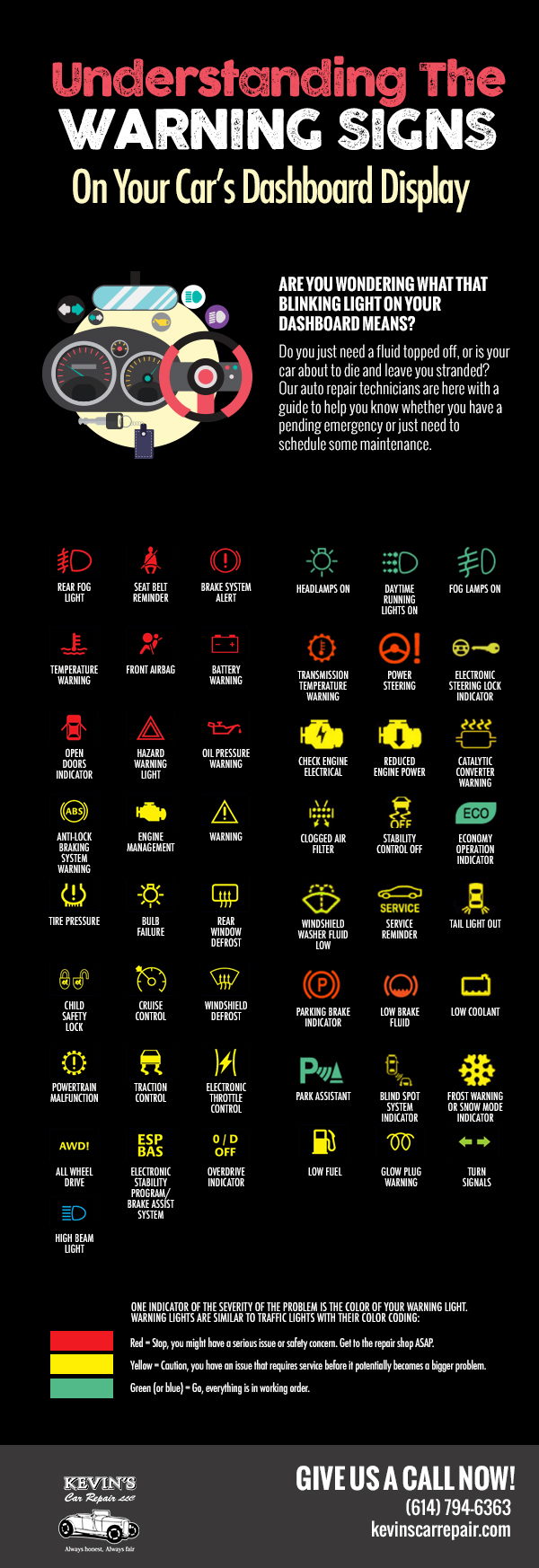Recognizing Your Auto'S Warning Lighting: What Do They Truly Mean?
Recognizing Your Auto'S Warning Lighting: What Do They Truly Mean?
Blog Article
Material Author-Termansen Forbes
When you're behind the wheel, those beautiful caution lights on your dashboard can be a bit difficult. Do you understand what they're attempting to tell you about your automobile's health? Comprehending the value of these lights is essential for your security and the durability of your automobile. So, the next time among those lights pops up, wouldn't you wish to understand its message precisely and take the essential actions to address it?
Common Caution Lights and Interpretations
Identify typical warning lights in your vehicle and comprehend their definitions to ensure safe driving.
The most normal warning lights consist of the check engine light, which indicates problems with the engine or discharges system. If this light comes on, it's crucial to have your car inspected immediately.
The oil pressure advising light shows reduced oil pressure, needing prompt interest to avoid engine damage.
A blinking battery light may recommend a malfunctioning charging system, possibly leaving you stranded otherwise attended to.
The tire pressure monitoring system (TPMS) light signals you to low tire pressure, influencing car stability and gas performance. Neglecting this might bring about dangerous driving conditions.
The abdominal light shows an issue with the anti-lock braking system, endangering your capacity to quit quickly in emergencies.
Finally, the coolant temperature warning light warns of engine getting too hot, which can lead to serious damages if not solved swiftly.
Comprehending these common warning lights will aid you resolve issues quickly and keep risk-free driving problems.
Value of Prompt Focus
Understanding the usual caution lights in your automobile is only the first step; the significance of quickly attending to these cautions can not be highlighted enough to guarantee your safety when traveling.
When a warning light brightens on your dashboard, it's your vehicle's means of communicating a potential concern that requires attention. Ignoring these cautions can result in a lot more severe troubles down the road, compromising your safety and security and possibly costing you much more out of commission.
Suggested Browsing to advising lights can stop failures and crashes. For example, a blinking check engine light might indicate a misfire that, if left neglected, could create damages to the catalytic converter. Addressing this immediately can save you from a pricey repair service.
Similarly, a brake system alerting light may signal reduced brake liquid or used brake pads, vital components for your security when driving.
Do It Yourself Troubleshooting Tips
If you see a warning light on your control panel, there are a couple of DIY repairing ideas you can attempt prior to looking for professional aid.
The primary step is to consult your automobile's handbook to understand what the particular caution light indicates. Occasionally the problem can be as straightforward as a loose gas cap causing the check engine light. Tightening the gas cap might resolve the issue.
Another usual issue is a reduced battery, which can set off numerous alerting lights. Inspecting car wash for boats for rust and ensuring they're secure might repair the issue.
If a caution light persists, you can try resetting it by disconnecting the auto's battery for a couple of mins and afterwards reconnecting it. Furthermore, checking your car's liquid degrees, such as oil, coolant, and brake fluid, can assist troubleshoot alerting lights related to these systems.
Final thought
In conclusion, comprehending your cars and truck's caution lights is essential for keeping your automobile running smoothly and securely. By immediately resolving these notifies and understanding what they imply, you can stay clear of expensive repair work and prospective malfunctions.
Bear in mind to consult your car's handbook for particular details on each advising light and take action appropriately to make sure a hassle-free driving experience.
Remain educated, remain risk-free when driving!
